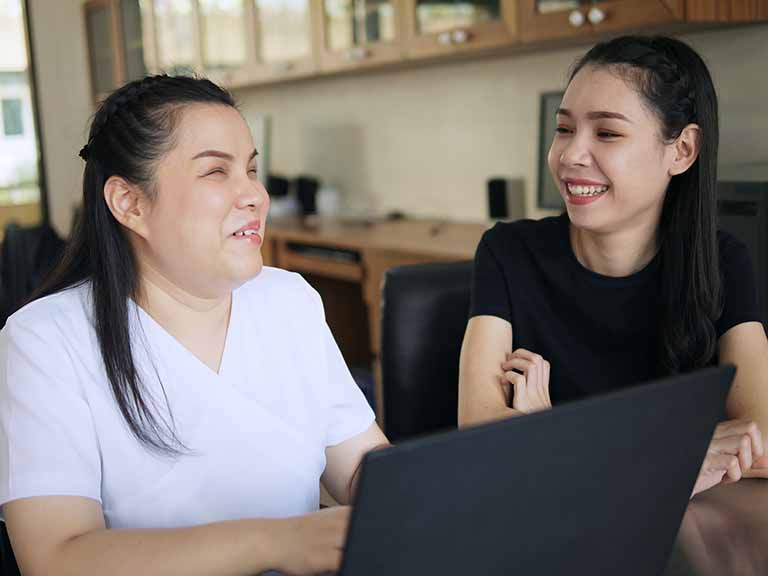Originally written on Oct 29, 2020. Content was updated in August 2023.
We all know that digital accessibility is important, but have you ever watched a person who is blind or who has visual impairments use a computer or website? Are you sure that your site is fully optimized to work with assistive technology meant to make it accessible to blind individuals?
Many businesses seem to be unfamiliar with screen readers (the predominant assistive technology used to help the blind access sites). UsableNet hosted a webinar in September 2020 on how a blind person uses a website with Joseph DiNero an Assistive Technology Specialist for Helen Keller Services for the Blind who is himself blind. There seemed to be a real desire from many companies to learn how assistive technology is used.
If you missed that webinar, we're bringing Joseph back for a second webinar on November 12th, World Usability Day.
Our November webinar will provide a demonstration and discuss new topics like how a blind person uses mobile and what to consider to make sure both experiences are accessible. Sign up now or continue reading for a 101 guide on how a blind person uses a website.
What is a Screen Reader?
Screen readers are a type of assistive technology that will render text and recognized icons on a website as either speech or braille so that those with sight impairments are able to access a site, too. It’s software that users can set up on their own desktop and mobile devices to help them access digital content.
The most common desktop screen readers are:
- JAWS, which is frequently used on Chrome and Firefox
- NVDA, which is commonly used on Firefox, Internet Explorer, and Chrome
- VoiceOver, which is commonly used with Chrome and Safari
How Do Screen Readers Work?
Screen readers typically use text-to-speech (TTS) technology to translate on-screen information into auditory speech. Users with visual disabilities are able to listen to the content displayed on a site with screen readers, including navigational menu options and alternative text for images.
Here’s how screen readers work when used for web browsing:
- Your website code provides information to the web browser
- The screen reader user navigates the website using their keyboard tab, arrow, return, up, and down keys. They can also use short cuts like “list all headers” or “list all links” to quickly find what they’re looking for.
- Keyboard cues or shortcut keys will interact with accessible website code to facilitate the navigation. The screen reader will announce what items are available (including items searched for during a product search, for example, or what menu items are available) so that the user can make their decision.
All of this only works, of course, if your site is accessible. If your site relies on clickable CTA buttons that are designed as graphics and not actual on-page text, for example, and you neglect to provide keyboard navigation options or alternative image text, even the best screen readers won’t be able to help blind users access your site properly.
This is why “accessibility widgets” and “accessibility” overlays typically don’t work and still keep you at-risk for violations of the ADA; they really only work as basic, less-advanced on-site screen readers instead of expanding full functionality or access to the site. If a screen reader can’t access it already, these widgets and overlays don't help. They can even make the experience worse.
Final Thoughts: How Websites Can Accommodate Screen Readers for Full Accessibility
Businesses are required by the Americans with Disabilities Act (ADA) to offer accessible sites to all customers, regardless of disabilities. That includes creating websites that are fully accessible to those using screen readers.
Because screen readers rely heavily on on-site text and website coding, it’s important to consider accessibility while building your site so that it’s incorporated from the ground up.
You’ll want to follow the WCAG 2.1 guidelines, which are the most current and thorough guidelines to date. While you’ll want to go through the entire list of guidelines, the biggest ones to check your site for in terms of screen reader accessibility include the following:
- Adding alternative text (alt text) to all images
- Ensuring that keyboard navigation is fully functional
- Have navigational headings clearly listed in the correct order
- Have link names contextualized and not vague (avoiding “click here” options)
You can check out our recent post to learn more about how to test and maintain ADA compliance for screen readers.
Interested in learning more about the experience of your website for people with visual disabilities? Blind people navigate digital content differently on mobile devices than on desktop computers.
On November 12th at 12 pm ET for World Usability Day, we'll host a new demo webinar and explain how to make your websites and apps usable and accessible for both experiences. Save your seat now.







